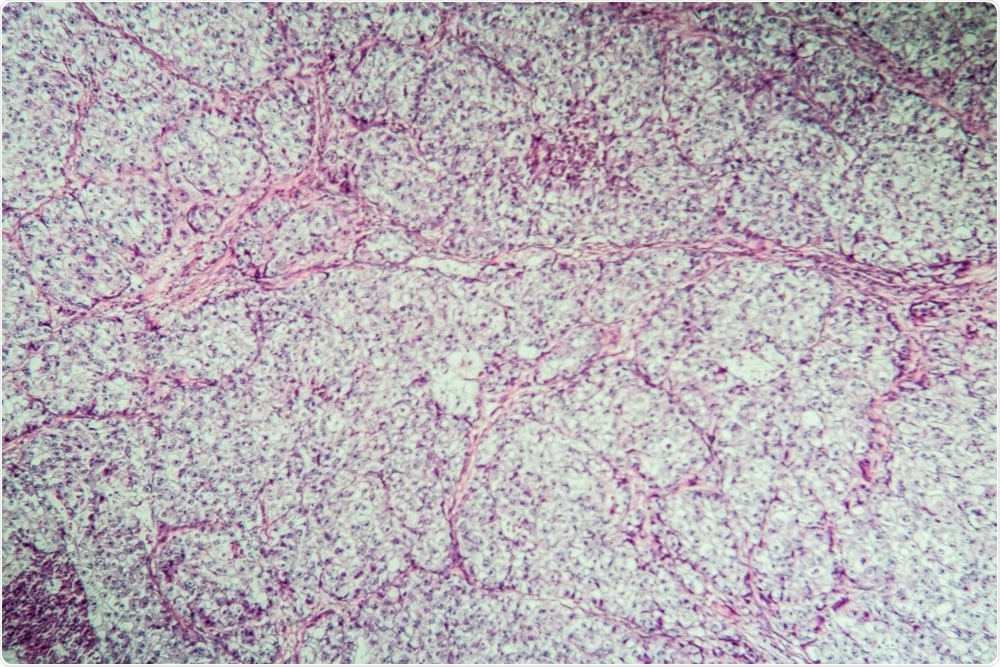High-grade serious s, or HGSOC for short, is the fifth major cause of cancer-associated deaths in women in the United States, but despite fact, not much is known about the origins of this disorder.

Image Credit: Dr. Norbert Lange/Shutterstock.com
Investigators from the College of Veterinary Medicine have now collaborated on a research work that pinpoints that type of particular genes that fuel—or delay—this fatal cancer.
We've taken the enormous collection of genomic mutation data that's been mined on cancer genetics and tried to make functional sense of it.”
John Schimenti, Study Senior Author and Professor of Genetics, Department of Biomedical Sciences, Cornell University
The results of the study were published in the Cell Reports journal on September 1st, 2020
Schimenti collaborated with Alexander Nikitin, a biomedical sciences colleague and also a professor of pathology and director of the Cornell Stem Cell Program, as well as members of their respective laboratory to gain a better insight into HGSOC.
Cancer scientists have known for a while that HGSOC is nearly always caused by numerous genetic “hits.” A single mutation alone does not make a cell cancerous; usually a minimum of two or three mutations are needed, and mostly varied combinations of genes can lead to the same cancer.
According to Schimenti, adding complexity is the fact that as soon as a crucial genome-destabilizing mutation emerges, others will follow. A plethora of mutations are yielded by sequenced tumors—a few of them are the originators of the cancer itself, while a majority of others are spinoffs.
It’s a longstanding issue in cancer research. What are the genetic drivers, and what are the passengers in the process?”
John Schimenti, Study Senior Author and Professor of Genetics, Department of Biomedical Sciences, Cornell University
To tackle these complexities, the team wanted to test the combinations of potential genetic suspects, and later parse out which of the various associated mutations were triggering the cancer.
To achieve this, the researchers turned to an international collaborative database called the Cancer Genome Atlas that compiles the genetic data from tumor samples taken from patients and the mutated genes connected with them.
The team took a list of 20 genes that are known to mutate in HGSOC and, with the help of CRISPR gene-editing technology, produced haphazard combinations of such mutations in cultured cells from the surface of the ovary, including normal epithelial stem cells and epithelial cells, to observe which type of cells was more vulnerable to the mutations.
The team then observed which combination of mutations turned which cluster of cells cancerous—determining both the genes causing the process and which type of cell the cancer originated in.
The research work unraveled what the researchers had originally suspected—that is, ovarian surface stem cells were more suitable to become cancerous when bombarded with mutations. The team also unexpectedly identified genes that had the reverse effect.
Schimenti added “We found there were various genes that would help the process along, but interestingly, there were other genes that, when mutated, actually inhibited the cancer initiation process.”
Knowing which are the cells of origin and also which genes are required to initiate this extremely aggressive form of ovarian cancer can offer a robust data, both for ovarian and other cancer types.
The cancer driver screening methodology we used should be applicable to answering the same kinds of questions for cells and cancers in other organs and tissues.”
Alexander Nikitin, Professor, Department of Pathology, Cornell University
Schimenti added that the results could be especially handy for ovarian cancer patients in whom their tumors are biopsied and sequenced for genetic information.
“In the past, you would know which genes were mutated but you wouldn't know what role they played. Now you know which ones are important. And eventually, you could develop drugs to target the mutated genes that you know are causing the problem,” Schimenti concluded.
Source:
Journal reference:
Yamulla R. J., et al. (2020) Most Commonly Mutated Genes in High-Grade Serous Ovarian Carcinoma Are Nonessential for Ovarian Surface Epithelial Stem Cell Transformation. Cell Reports. doi.org/10.1016/j.celrep.2020.108086.